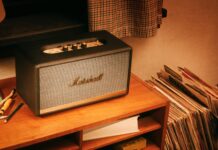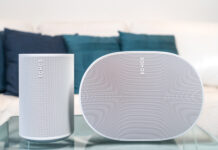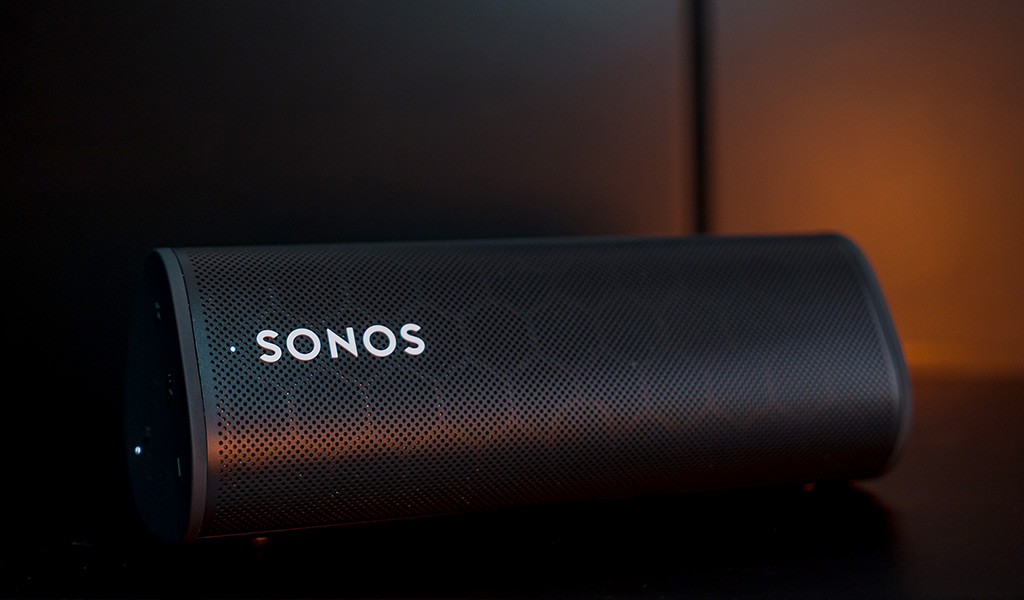
The Sonos Roam finally puts the company into new territory of portable speakers that you can take just about anywhere. Small and easy to carry, it’s a wireless speaker capable of playing big sound when you need it to.
The Roam completes something of a winding circle for Sonos. For a company that made its name with wireless multi-room sound, it took a while before the concept of actually moving the speaker from one room to another came about. That was the Sonos Move, which is a great example of doing that at home, but what about home and everywhere else?
That’s why Sonos called this speaker by its name. The Roam is the smallest speaker Sonos made to date. So small, in fact, the Move dwarfs it in size. The name of the game here is portability, but without losing too much in sound quality. Can big sound come in a small package? Let’s find out.
Sonos Roam design and setup
The Roam follows much of Sonos’ design philosophy, right down to the colour options and materials. It fits right in with the rest of the product lineup, though is obviously the smallest of the bunch. At 6.61-inches tall, there are smartphones about the same height—or at least close to that. It also weighs a wee bit less than a pound, so lightweight enough to carry.
It’s also the first speaker Sonos made to be water-resistant through IP67 protection. If you wanted to, you could dunk it in one metre of water for up to 30 minutes. Keep it away from saltwater, though, as there’s no proper protection from salt.
This is a Wi-Fi and Bluetooth speaker, and it can work either way, depending on your setup. When I first set it up in the Sonos app, I added it to my existing system. That covered the Wi-Fi portion, but I also added it as a Bluetooth device, ensuring that it could also work with audio sources that Sonos doesn’t officially support. I personally find that to be a huge benefit when listening to playlists from YouTube, but also comes in handy when Wi-Fi isn’t an option. And for iOS and Mac users, AirPlay 2 support also makes it super easy to push audio content over as well.
The speaker has a play/pause button at the one end, along with volume controls, and another for the onboard microphone. The other end is actually a wireless charging surface. Place the speaker on top of a Qi-enabled pad or surface, and you can charge up the speaker wirelessly.

Voice assistant integration
The microphone button is there for voice assistants, meaning Amazon Alexa or Google Assistant. It’s up to you as to which one you want (you choose in the app), and so long as the microphone LED is lit on the speaker, it will listen for the wake word.
There’s no special feature involved here, otherwise. It works the same way it does on other Sonos speakers integrating these assistants. You command, it listens, and that’s it. The only catch is that it needs Wi-Fi connectivity to actually do that, so it won’t work when connected via Bluetooth. If you already have voice assistance set up with other speakers in your home, it may not be a feature you need to use, but it is always there anytime you do.
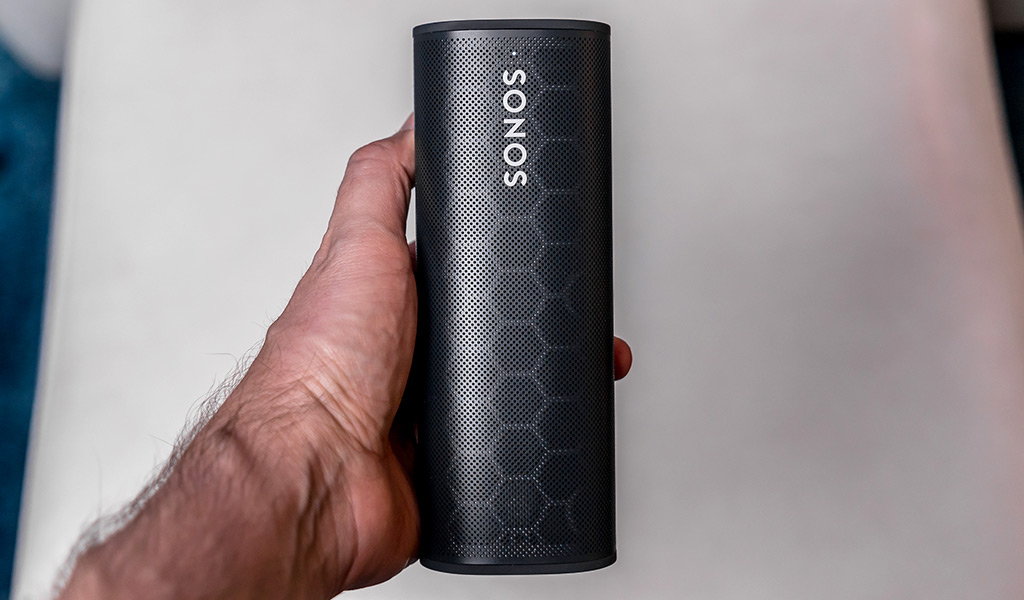
Audio performance
The Roam has two Class-H amplifiers, with a tweeter and custom mid-woofer to balance out highs, mids and lows. Sonos says it included a high-efficiency motor to increase power and range, which would be necessary to pump out louder and deeper sound. Sonos’ Trueplay sensing technology is also built-in, and you won’t need to wave your phone around to tell it about its surroundings. It scans for them at all times. Move it from one room to another, and it recalibrates.
All of that happens in the background, and if you can discern any audible differences, you might be able to tell. Either way, the Roam is the kind of speaker you can appreciate in a quiet setting, or to get a little loud. It has what I would consider a “tipping point” in that it can go from moderate to very loud with only a few notches. From 50% volume, press the volume up button about four or five times, and there’s a noticeable boost. Go full blast, and some distortion starts to set in.
I found there was better bass response when the speaker was laid down horizontally, partly because it vibrates more with the surface beneath it. You may find more of an effect with wood, metal and glass, than you might with stone, concrete or cloth. For me, I preferred to place it horizontally when playing music, and let it stand up with spoken word content, like podcasts and audiobooks.
As loud as it is, I’ve seen thicker bass come from other speakers. Sonos wasn’t looking to have the deepest speaker here, just the most balanced. The Roam isn’t a 360-degree speaker, or even a 180-degree one. It focuses audio in one direction, so getting the best sound often means being in front of it.

Part of the Sonos system
There is a neat feature called Sound Swap that will automatically switch playback from the Roam over to the nearest Sonos speaker in your system. Just hold down the play/pause button and it takes it from there. It’s a cool way to integrate the speaker with others, and that includes grouping it with them. Instead of a simple swap, you can just have them all play the same thing.
In the Sonos S2 app, the Roam is just another cog in the wheel. Access and functionality are all the same as with the others. Control the EQ with treble and bass sliders, plus the loudness slider. Update the firmware whenever prompted. If you know Sonos speakers, you know the drill. If not, it’s not hard to manage at all.
The good news is that Sonos is known for keeping its hardware up to date. I would imagine the Roam will last longer, and possibly get new features, over time. Whatever efficiencies it can cram into the software to improve performance will be nice, but it’s too early to tell what those might be.
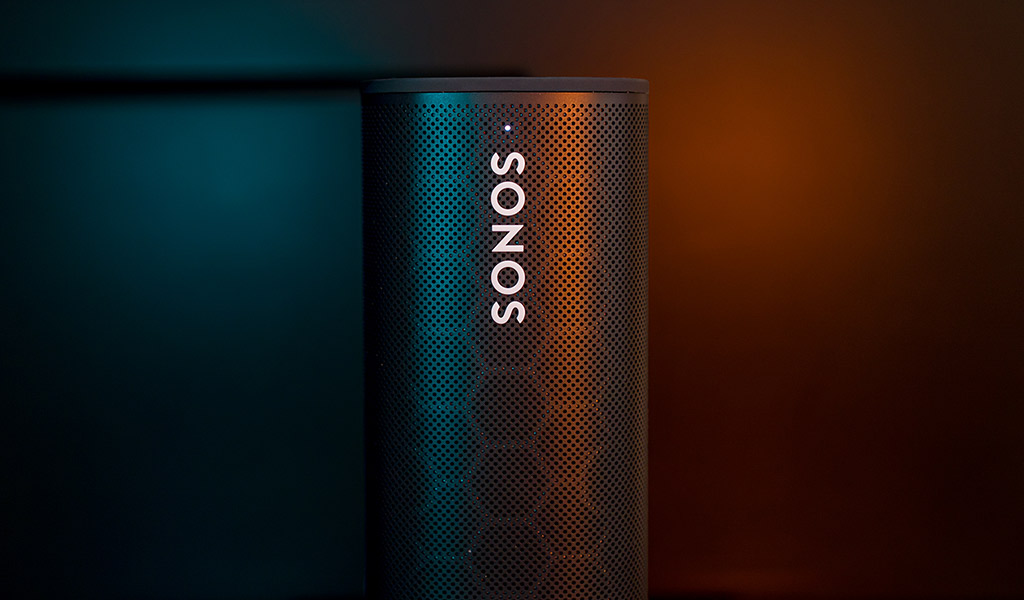
Battery life
Sonos rates the Roam at up to 10 hours of playback per charge. Mind you, that’s at default volume, so the more you raise it, the more likely you won’t hit that number. I couldn’t tell if Wi-Fi or Bluetooth had any difference in battery life between them, but I’m guessing not.
My one gripe is that once the battery died, I had to plug in via USB-C to charge and wait for it to get enough juice to turn on again. Basically, if you plug in and try to power it on, nothing happens until the amber LED on the right side is gone. Conversely, if I plugged in prior to the battery dying, it could keep playing and charge at the same time.
Another issue is battery drain related to Google Assistant. The Roam loses its charge faster when it’s enabled, and the speaker doesn’t seem to go in standby mode that way, either. Sonos says it will fix that with an upcoming software update, but for now, best to turn the speaker off right away when you’re not using it.
Final thoughts
The Roam enters a crowded space, yet does so with a whole system behind it. Sonos is already reputable, so what’s “new” here is the portability of the design. Sonos users have waited for it for years, and now it’s finally here. I wouldn’t say I was blown away by it, but I don’t think that was the point. This speaker addresses a missing element for Sonos and does it in a competent way.
If you’re new to Sonos, I wouldn’t advise getting this as your first speaker—unless you already subscribe to a supported music streaming service. It’s the experience that makes up half the company’s products, and while you do have Bluetooth and AirPlay, simple Wi-Fi connectivity makes it a really mobile speaker within the home.
Find the Sonos Roam today at Best Buy.


